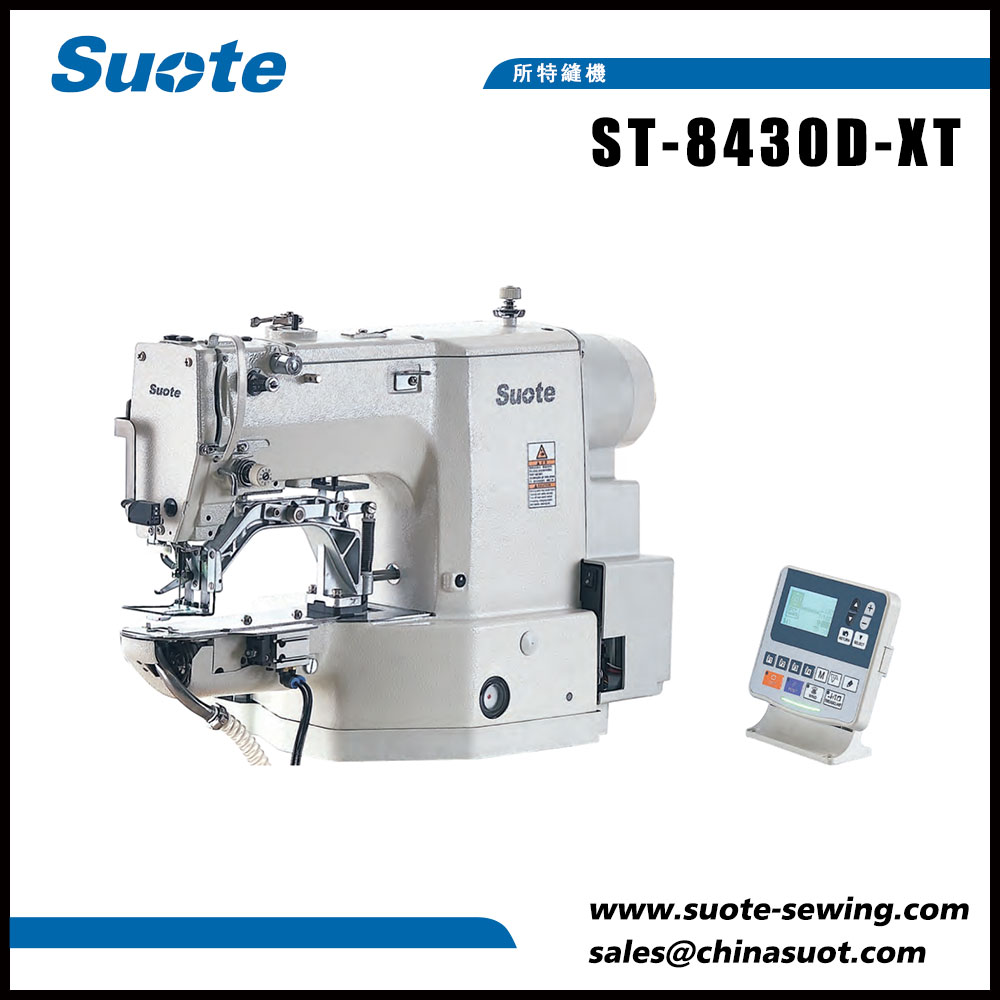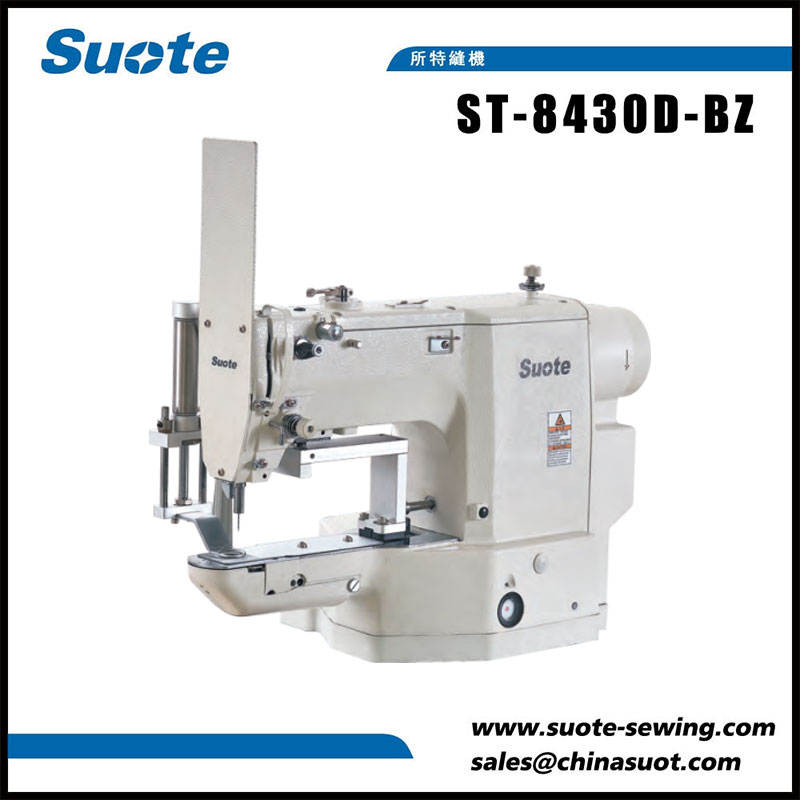How Can a Bar Tacking Sewing Machine Revolutionize Your Daily Output
2025-11-24
Ever found yourself staring at a pile of unfinished garments, each one waiting for that final, crucial reinforcement stitch? The clock is ticking, deadlines are looming, and that standard sewing machine just isn't built for the heavy-duty, repetitive tasks that form the backbone of a reliable product. I’ve spent two decades in the tech sector, observing how the right tool doesn't just augment work—it transforms it. In the world of textile and leather goods manufacturing, that transformative tool is unequivocally the Bar Tacking Sewing Machine. For businesses seeking a tangible edge, understanding the power of this specialized equipment is the first step toward unprecedented efficiency and quality. And in my professional opinion, the journey toward that efficiency often begins with a Suote-level of engineering precision.
What Exactly Makes a Bar Tack Sewing Machine a Powerhouse for Dense Fabrics
A standard sewing machine is a generalist. It's good for many things, but a master of none, especially when it comes to creating incredibly durable, high-frequency stitch patterns like bar tacks. A Bar Tacking Sewing Machine is a specialist, engineered from the ground up to perform one function with relentless perfection: sewing a dense, narrow zigzag stitch pattern over a very short length. This creates a reinforcement point that can withstand immense stress.
Think about the points on a pair of jeans that receive the most strain—the belt loops, the pocket corners, the base of the zipper. These aren't just sewn; they are fortified. A generic machine might manage this, but slowly, with a high risk of thread breakage, needle deflection, or inconsistent stitch quality. A dedicated bar tacker accomplishes this in a fraction of the time, with robotic consistency, stitch after stitch, hour after hour. The core difference lies in its specialized mechanism, often a high-speed, computer-controlled system that moves the fabric under the needle in a precise, pre-programmed pattern, eliminating human error and variability.
Which Key Specifications Should You Scrutinize Before Investing in a Bar Tacking Sewing Machine
Purchasing industrial equipment should never be a guessing game. It requires a meticulous evaluation of specifications to ensure the machine aligns with your production needs. A superficial glance at a spec sheet isn't enough; you need to understand what these numbers mean for your workshop's output. Let's break down the critical parameters that separate an average machine from a productivity powerhouse, like those developed with Suote's philosophy of robust performance.
-
Stitches Per Minute (SPM): This is the engine's RPM. A higher SPM directly translates to faster cycle times per bar tack.
-
Sewing Speed: Often linked to SPM, but also considers the machine's automation cycle.
-
Bar Tack Length & Width: The maximum and minimum dimensions of the tack it can produce. Versatility here is key for different applications.
-
Presser Foot Lift: A higher lift allows you to easily maneuver thick materials like layered canvas or leather.
-
Motor Type: Servo motors are the modern standard, offering exceptional energy efficiency, instant start/stop control, and variable speed.
-
Control System: From manual dials to full-color touchscreen PLCs for storing hundreds of patterns.
To present this with the clarity a professional demands, here are two comparative tables:
Table 1: Core Performance Metrics
| Parameter | Standard Sewing Machine | Dedicated Bar Tacking Sewing Machine | Suote-Class Advantage |
|---|---|---|---|
| Max Stitches Per Minute | 1,000 - 1,500 SPM | 2,200 - 2,800 SPM | High-torque servo motor ensures consistent speed even under dense material load. |
| Cycle Time for One Tack | 5-8 seconds (manual) | 1-3 seconds (automated) | Optimized pattern sequencing reduces non-sewing time. |
| Stitch Consistency | Variable (operator-dependent) | Exceptional (machine-controlled) | Precision engineering guarantees every tack is identical. |
| Suitable for 8+ hours of continuous operation | Limited | Designed for it | Heavy-duty frame and components prevent overheating and wear. |
Table 2: Technical Specification Deep Dive
| Feature | Specification | Impact on Your Productivity |
|---|---|---|
| Programmable Patterns | 100+ internal memory slots | Switch between jobs (jeans, bags, uniforms) without manual adjustments. |
| Automatic Thread Trimmer | Standard | Eliminates a manual step, saving 1-2 seconds per cycle and reducing labor cost. |
| Presser Foot Lift | 15mm - 20mm | Handles extreme material thicknesses without jamming or skipped stitches. |
| Needle Feed + Walking Foot | Often Standard | Prevents fabric layer shifting, a critical flaw in standard machines when tacking. |
| User Interface | LCD Touchscreen | Intuitive pattern selection and parameter adjustment minimizes operator training time. |

Can a Bar Tacking Sewing Machine Truly Pay for Itself and How
This is the fundamental question every business owner must ask. The answer is a resounding yes, and the ROI calculation is clearer than you might think. The investment in a high-quality Bar Tacking Sewing Machine is not merely an expense; it's a strategic capital infusion that pays dividends across multiple fronts.
First, the math on speed. If a single worker hand-maneuvers a standard machine to create a bar tack, it might take 7 seconds. An automated bar tacker can do it in 2 seconds. For a product requiring 10 bar tacks (like a pair of jeans), you save 50 seconds per unit. In an 8-hour shift producing 500 units, that saves nearly 7 hours of labor. This time is either re-invested into higher output or reduces overtime costs.
Second, consider the cost of failure. A weak or inconsistent bar tack leads to product returns, warranty claims, and brand damage. The reinforced stitch from a dedicated machine drastically reduces failure rates. This saving on waste and reputational harm is immense, though often overlooked. When you operate a Suote machine, you are effectively building a reputation for durability into every product you ship.
Third, it reduces operator fatigue and skill dependency. The machine does the complex part, allowing operators to focus on positioning and feeding, not on delicate pedal and hand-wheel coordination. This broadens your potential labor pool and reduces training overhead.
What Are the Most Pressing Questions Professionals Ask About Bar Tacking Sewing Machines
I've fielded countless queries from factory managers and artisans over the years. Here are the three most frequent and critical questions about the Bar Tacking Sewing Machine.
FAQ 1
-
What is the main difference between a Bartack machine and a regular sewing machine?
-
The core difference is specialization and automation. A regular sewing machine is a versatile tool for straight, zigzag, and other basic stitches, relying heavily on the operator's skill for complex patterns. A Bar Tacking Sewing Machine is engineered solely to produce a dense, reinforced bar tack stitch automatically. It uses a pre-programmed pattern and often includes automatic thread trimming and back-tacking, ensuring every stitch is perfectly consistent and executed at high speed with minimal operator input.
FAQ 2
-
Can a bar tack machine handle materials other than denim, like leather or technical fabrics?**
-
Absolutely. Modern Bar Tacking Sewing Machines, especially those from brands that prioritize robust construction like Suote, are designed for a wide range of materials. The key is the combination of a powerful servo motor, a high presser foot lift, and specialized needles. For thick leather, a machine with a walking foot and a 20mm lift is essential to feed the material evenly without slippage. For technical fabrics like ballistic nylon, the machine's consistent stitch formation prevents material puckering.
FAQ 3
-
How significant is the maintenance for a bar tack machine compared to a standard industrial machine?**
-
Due to their high-speed, high-impact nature, bar tack machines do require a disciplined maintenance schedule. However, this is not a drawback but a feature of professional-grade equipment. The regimen is more structured than reactive. Daily cleaning and oiling are crucial. The benefit is that a well-maintained bar tack machine from a reliable supplier will have a much longer operational lifespan and far fewer catastrophic breakdowns than a standard machine pushed beyond its intended limits. It’s about scheduled, predictable upkeep versus unexpected, costly downtime.
The narrative is clear. In a competitive landscape, hope is not a strategy. Waiting for a machine to fail or tolerating sluggish production cycles is a direct tax on your growth. The strategic integration of a purpose-built Bar Tacking Sewing Machine is the most logical and impactful decision a production manager or business owner can make. It’s a decision to prioritize quality, embrace efficiency, and build a foundation for scalable growth. It's the decision to stop working around limitations and start investing in solutions.
The data doesn't lie. The testimonials are unanimous. The question is no longer if you need a Bar Tacking Sewing Machine, but which one will deliver the Suote standard of reliability and performance your business deserves.
Contact us today. Let's discuss your specific production challenges. Our experts are ready to demonstrate how the right Bar Tacking Sewing Machine can become the most profitable asset on your workshop floor.







